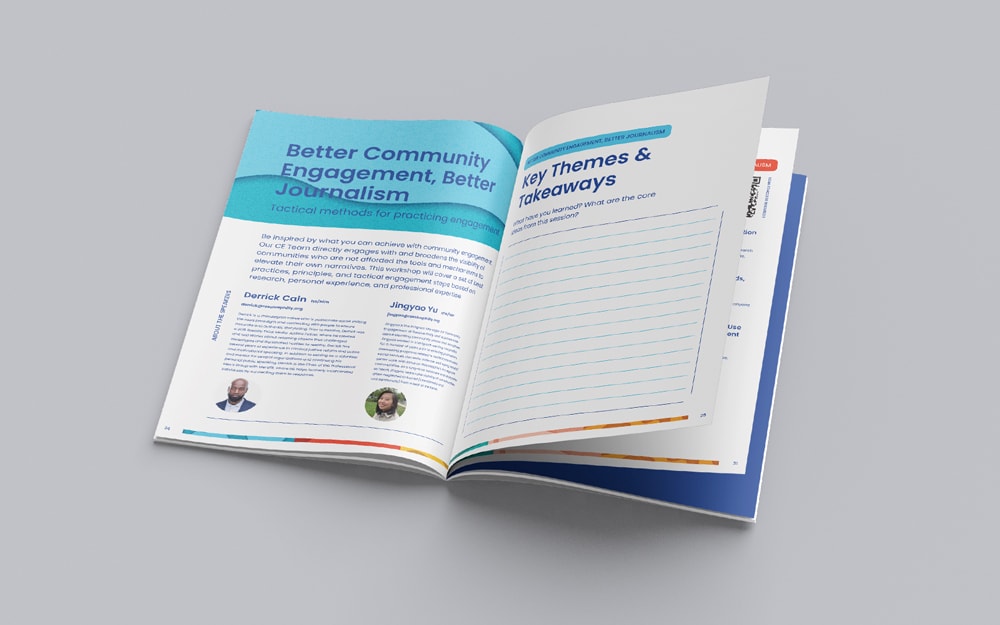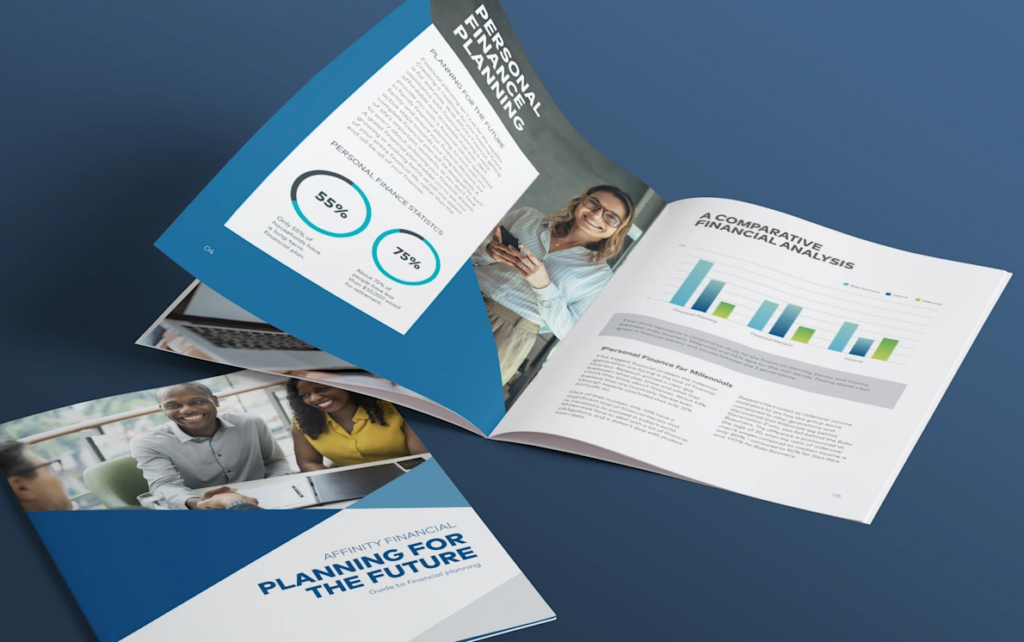Booklet Printing FAQs: Everything You Need to Know Before You Order
Booklet Printing FAQs: Everything You Need to Know Before You Order
Blog Article
The Necessary Overview to Recognizing Pamphlet Printing Options and Techniques
The process of booklet printing includes several factors to consider that can considerably impact the last product. From choosing the appropriate style and dimension to understanding the subtleties of binding methods, each option plays a crucial duty. Furthermore, factors such as paper supply and printing methods further affect the efficiency of the pamphlet. As one browses these options, it comes to be necessary to comprehend how they adjoin and what that implies for the total result.
Recognizing Pamphlet Formats and Dimensions
When thinking about pamphlet printing, understanding the numerous formats and dimensions available is important for attaining the desired discussion. Booklets can be created in countless styles, consisting of saddle-stitched, spiral-bound, and perfect-bound, each offering distinct advantages. Usual sizes vary from conventional letter (8.5 x 11 inches) to smaller choices like A5 (5.8 x 8.3 inches), enabling versatility based upon web content and target audience.Selecting the suitable dimension can affect both the layout and visitor involvement. Larger sizes could suit visually driven material, while smaller sized formats might be much more easy to use and portable. Additionally, the number of pages impacts the choice of binding method, as thicker pamphlets may call for stronger bindings. Eventually, comprehending these facets permits an extra tailored method, guaranteeing that the end product lines up with the desired message and aesthetic, boosting the general effectiveness of the interaction.
Picking the Right Paper Stock

Binding Techniques: Choices and Considerations
When it involves binding approaches for booklets, several choices are readily available, each with distinctive advantages. Saddle stitch binding offers a cost-efficient remedy for thinner booklets, while ideal binding methods supply an even more sleek search for thicker magazines. Wire-O binding attracts attention for its resilience and simplicity of use, making it suitable for records that call for adaptability.
Saddle Stitch Binding
Saddle stitch binding offers a practical and affordable service for putting together brochures, making it a prominent option amongst publishers and companies. This binding method involves folding sheets of paper in fifty percent and stapling them along the fold line, creating a cool and organized look. Typically ideal for booklets with a reduced web page count, saddle sewing is suitable for publications, pamphlets, and instructional materials. The simpleness of this technique permits fast production and is often favored for advertising products or brief runs. It is important to keep in mind that saddle stitch binding might not be ideal for thicker booklets, as the spinal column may not hold up under increased weight. In general, it remains a reliable choice for lots of printing jobs.
Perfect Binding Methods
Perfect binding is a commonly utilized technique that supplies a refined and specialist finish to booklets and publications. This approach involves gluing the web pages together at the spinal column utilizing a strong adhesive, permitting a tidy side and the capacity to hold a bigger variety of pages compared to saddle stitching. Perfect binding is especially suitable for thicker pamphlets, such as magazines and annual records, where a durable, level spinal column is desired. In addition, it uses the option for a printed cover that can be created to enhance aesthetic appeal. Nevertheless, considerations such as page matter, paper weight, and the intended usage of the pamphlet should be taken into account, as they can influence longevity and overall high quality.
Wire-O Binding Choices
Wire-O binding, understood for its durability and flexibility, provides an exceptional alternative for pamphlets that call for very easy web page transforming and a specialist look. This binding approach uses a collection of steel loopholes that hold pages safely, enabling them to lie flat when open. It is particularly suitable for manuals, discussions, and magazines because of its robust nature. Wire-O binding is available in various shades and sizes, fitting different web page matters and thicknesses. Additionally, it allows the addition of covers and tabs, boosting the pamphlet's general aesthetic. Factors to consider for Wire-O binding consist of the choice of cord shade, the size of the loopholes, and the degree of personalization desired, every one of which can exceptionally affect the last product's appearance and performance.
Digital vs. Offset Printing: Which Is Best for You?
When selecting a printing approach for brochures, understanding the distinctions between electronic and offset printing is essential. Digital printing makes use of contemporary innovation to create high-quality prints promptly and economically, making it ideal for brief runs or projects calling for quick turn-around times. It permits personalization, providing the capacity to print on-demand with very little waste.In contrast, counter printing is a conventional method that succeeds in generating large quantities with regular top quality. It includes transferring ink from a plate to a rubber covering, then to the paper, which results in precise details and vivid colors. Counter printing generally needs longer arrangement times and is more affordable for larger volumes.Ultimately, the option in between electronic and counter printing depends on project requirements, budget, and preferred quantity. For little, time-sensitive tasks, electronic may be the most effective choice, while offset may be more suitable for larger, top notch manufacturings.

Creating Your Pamphlet: Tips and Ideal Practices
When making a pamphlet, cautious attention to layout, typeface choice, and color use can greatly boost its efficiency. A well-structured format overviews the visitor's eye, while suitable fonts assure readability and communicate the desired tone. In addition, efficient use of shade can evoke feelings and emphasize essential details, making the general design extra impactful.
Selecting the Right Layout
Just how can one efficiently choose the ideal layout for a pamphlet? It is crucial to examine the pamphlet's purpose and target audience. A clean, arranged format enhances readability and interaction. Using a grid system can help in lining up components continually, producing a specialist look. Additionally, including visual hierarchy through differing sizes and positionings of images and text can lead the reader's eye and highlight essential details. It is likewise essential to leave enough white room, which prevents overcrowding and enables better focus. Checking various designs with mock-ups can give understanding into how the layout executes in real-world scenarios, ensuring that the last item meets both aesthetic and practical requirements. Practical Choosing Ideal Font Styles
A well-chosen typeface can significantly improve the general design of a brochure, complementing the format and strengthening the content's message. The option of font styles must take into consideration readability, particularly for body message, as it guarantees the details is easily accessible to all visitors. Sans-serif font styles are frequently chosen for electronic formats, while serif typefaces can lend a standard feeling in printed materials. It's a good idea to limit font options to 2 or 3 to preserve aesthetic comprehensibility. Furthermore, font size plays a vital duty; headings need to be not frustrating yet distinct, while body message ought to fit for analysis. When picking typefaces, positioning with the booklet's theme and target market is necessary for efficient interaction and aesthetic appeal.
Reliable Use of Shade
Shade functions Resources as an effective tool in pamphlet layout, assisting and forming assumptions reader emotions. It can evoke feelings of exhilaration, count on, or calmness, depending upon the colors selected. Designers should take into consideration color concept principles, guaranteeing that the picked palette lines up with the brochure's message and target audience. Making use of warm colors like red and orange can develop urgency, while cooler tones like environment-friendly and blue foster tranquility.Additionally, comparison plays an important duty; corresponding colors can improve readability and aesthetic charm. Consistency in shade usage across pages further strengthens brand identification and communication. Inevitably, reliable shade application not only catches focus but additionally enhances the pamphlet's objective, making it an important element of successful design.
Completing Touches: Coatings and Special Impacts
While numerous take into consideration the web content and format of a pamphlet the most critical components, the ending up touches, such as finishes and special results, play a crucial role in improving its overall charm. Coatings can provide defense and toughness, making sure that the brochure holds up against deterioration. Matte coatings use an advanced, non-reflective surface area, while glossy finishes can make shades show up more lively and distinctive. Unique effects, like embossing or aluminum foil stamping, include a responsive dimension that can create an unforgettable impression. These methods can highlight certain locations, drawing interest to vital information or producing aesthetic rate of interest. In addition, UV coating can provide a high-shine coating that raises the general look.Together, these finishing touches not just boost the pamphlet's aesthetic however also connect professionalism and interest to information, eventually leaving a long-term influence on the viewers.
Price Considerations for Booklet Printing
Comprehending the numerous expense considerations for brochure printing is necessary for businesses and organizations aiming to optimize their budget plans. Key variables influencing costs consist of the option of paper, binding, and ink techniques. Greater top quality products, such as premium paper or specialized inks, usually enhance the general cost. Additionally, the dimension and web page matter of the pamphlet play a considerable role; bigger booklets need even more sources and time to produce.Another crucial consideration is the printing strategy, whether electronic or balanced out, as her latest blog each has its very own pricing framework and suitability for different amounts. Businesses should additionally factor in design expenses, which can differ based upon complexity and the usage of expert services. Ultimately, shipping and handling charges can include to the total amount, specifically for large orders. By assessing these aspects, companies can make educated decisions that line up with their economic abilities while attaining the try here wanted quality in their published materials.
Frequently Asked Inquiries
What Are the Ecological Influences of Booklet Printing?
The environmental impacts of booklet printing consist of logging from paper manufacturing, carbon exhausts from transport, and waste generation from disposed of products - Booklet Printing. Lasting methods, such as making use of recycled paper and environmentally friendly inks, can mitigate these results
Just How Can I Make Sure Color Precision in My Booklet?
To ensure shade precision in a booklet, one must make use of calibrated displays, utilize professional color accounts, carry out examination prints, and pick high-quality printing solutions that provide shade matching and proofing options for finest outcomes.
What Is the Typical Turnaround Time for Booklet Printing?
The regular turnaround time for pamphlet printing differs depending on the intricacy and amount - Booklet Printing. Usually, it varies from a few days to 2 weeks, affected by aspects such as publishing approaches and ending up needs
Exist Minimum Order Quantities for Booklet Printing?

Can I Publish Pamphlets in Multiple Languages?
Printing brochures in numerous languages is feasible. Numerous printing services provide options for bilingual or multilingual layouts, enabling for efficient communication. Careful planning assurances that create components suit numerous languages without endangering readability or visual appeals. Furthermore, aspects such as paper supply and printing methods additional affect the efficiency of the brochure. When thinking about brochure printing, comprehending the different formats and sizes available is important for achieving the desired discussion. When picking a printing approach for brochures, comprehending the differences between electronic and counter printing is necessary. Furthermore, the size and page matter of the brochure play a considerable role; bigger pamphlets need more sources and time to produce.Another vital consideration is the printing technique, whether electronic or balanced out, as each has its own pricing framework and suitability for different amounts. The environmental impacts of pamphlet printing include deforestation from paper manufacturing, carbon emissions from transport, and waste generation from disposed of materials.
Report this page